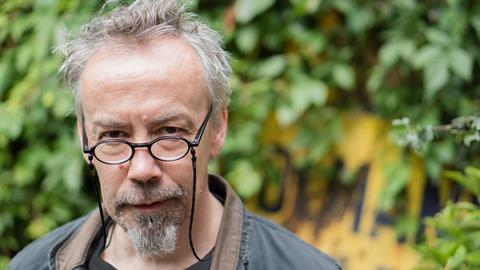Now is the time to establish a design quality unit for England, argues David Rudlin

OK, so I might have been a bit pessimistic in my last column when I suggested that, for all the talk of everything being different after covid-19, things would go back to the way they were. We continue to be bombarded with messages that “now more than ever” we need to bridge social divisions, tackle the climate emergency, the housing crisis, air pollution, biodiversity and, of course, design quality. I whole-heartedly agree – but wishing is not enough. My prediction was that, within a year or so, our fear of the city (and public transport) will dissipate but unfortunately so will our good intentions, unless we do something about it now.
This has been a recurring theme in discussions over the last few months between a consortium of built environment organisations who are today launching a campaign to establish a Design Quality Unit for England (Scotland and Wales already have theirs). The Place Alliance, Design Council, Academy of Urbanism, Trees and Design Action Group, CPRE, Civic Voice and Urban Design Group are arguing that we need a small but authoritative unit that can monitor the quality of what is being delivered across the built environment, challenge, inspire and help deliver quality design. Now is the time to create an institution that can build on the momentum for change (particularly that created by the Building Better, Building Beautiful Commission) which existed prior to the pandemic.
The Oxford University historian Margaret MacMillan, writing in Prospect magazine, provides a fascinating historical context for the way that crises have led to social change. Taking a broad historical sweep including wars, plagues and natural disasters, she concludes: “The more acute the crisis or threat, the starker the choice between survival or not, the more we have historically been ready to modify flawed beliefs and make lasting social changes.”
During these extreme events we can achieve extraordinary things, in a fraction of the time they would normally take – like the Nightingale hospitals. There then comes a point when discussions turn from “winning the war” to “winning the peace”, something that needs to happen sooner rather than later.
This is not easy and certainly not a given. She contrasts the 1954 hurricane in her home city of Toronto which led to the creation of a powerful conservation authority that has transformed the city, with the confused response to Hurricane Katrina from which New Orleans is yet to fully recover. For every transformational event, there are many others where division and weak leadership have led to lasting damage.
For every transformational event, there are many others where division and weak leadership have led to lasting damage
The Second World War is often cited by politicians. In the early years of the war there were a series of committees, such as Beverage, that published reports on how society might change after the war. Plans were drawn up, acts of parliament passed, and organisations established, the result being our modern welfare state, National Heath Service and planning system.
The key was to establish institutions that could bottle the desire for change in their founding precepts and carry it forward when the rest of us had returned to our daily lives. Just as the Design Council was created during the Second World War, so a Design Quality Unit would be an appropriate legacy for this crisis. It would help ensure that all our good intentions about reclaiming the city for pedestrians and cyclists, creating attractive democratic public places, building quality homes and addressing the built environment’s contribution to the climate emergency would have a champion.
We will be accused of reinventing Cabe and some might think that’s no bad thing. However the organisation we are talking about is much smaller and more sharply focused on the issues we need to address to achieve design quality. It also wouldn’t include design review which is being done effectively at the local level but would instead be based on a hub and spokes model linking diverse organisations already working in this space across the country.
We set out four options for how the unit might be constituted. On the one hand it could be part of government as an extension of the chief architect’s role; on the other it could be an independent organisation. The former perhaps lacking sufficient independence and the latter sufficient influence. In the middle it could be a quango or a partnership, maybe a built environment version of the Office for Budget Responsibility. Architecture and Design Scotland, with its staff of 25, would be a good model as would the Federal Foundation of Baukultur in Germany.
>> Also read: Government appoints Andy von Bradsky as head of architecture
As the BBBB Commission pointed out, the poor state of design in the built environment in the UK is a systemic failure rather than a lack of talent or understanding. We need to harness all of our good intentions in this time of crisis to create the conditions to win the peace once the pandemic subsides.

















1 Readers' comment